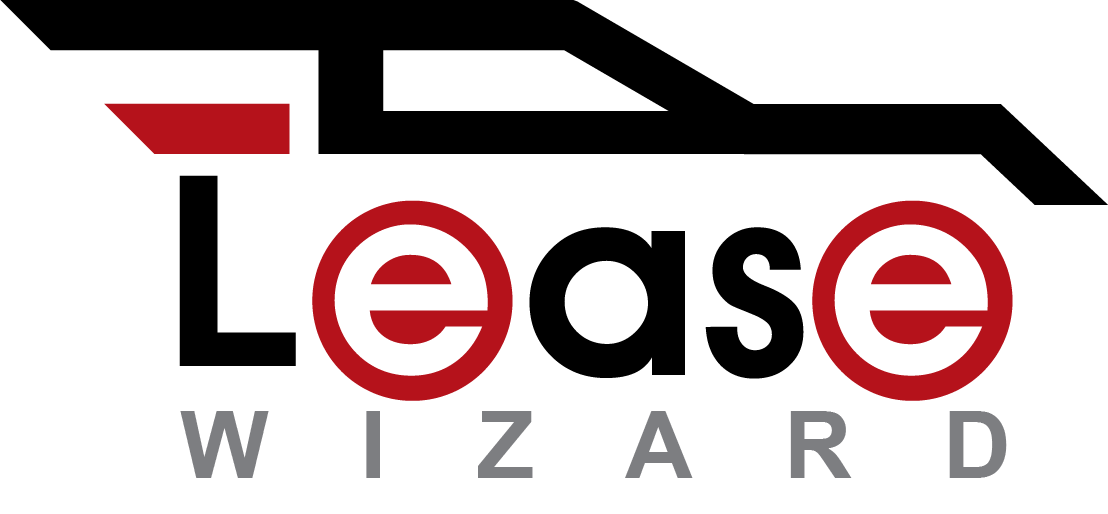**This post contains affiliate links and the publisher may be compensated if you make a purchase after clicking on these links.**
You’re at the dealership surrounded by shiny, new vehicles. Your eyes are dazzled by brilliant colors, glittering rims, and your senses are completely overwhelmed with the rush of that new car smell. You’ve done the research and know you want to lease a new car.
You look up and the smiling car salesman is walking toward you. He shakes your hand and asks how he can help you. You mention the car you’ve had your eye on, and together you glide across the showroom floor. Here it is, your dream car, and you’re ready to slip into the driver’s seat and take her for a spin. The dealer takes your driver’s license, grabs the keys, and you make your way to the lot. Your fingers grip the steering wheel; its a perfect fit in your palms. The sun is shining, and the weather is just perfect to test out the sunroof. With the touch of a button, it slides back effortlessly. You don a pair of sweet shades, and you’re ready to roll. As you float around every turn, and roll to a seamless stop, the salesman continues to tell you all of the perks, safety and environmental features this model has to offer. You make it back to the lot, and the adrenaline rush is absolutely euphoric. The gleaming smile that’s spread across your face is there to stay, and you’re thinking… Where do I sign?
Stop. Breathe. Get the best deal.
Before You Go
Deciding to lease a new car can be very exciting, but before you run to the nearest dealership there are a few preparations you should make.
-
- Check your credit. The very first thing you should know before signing a lease is your credit score. Your credit will influence many factors of your lease, and knowing before you go will help you in knowing what you may be able to negotiate, as well as understanding whether you may need more cash to put down upfront.
- Know your monthly budget. Next, it’s important to take a good look at your monthly cash flow, and know what exactly you can afford. Signing a lease that you can’t afford can turn into a nightmare, so always know what you can handle. Keep in mind other monthly expenses that coincide with leasing a car, such as insurance. If you plan to trade in a car with less coverage, your insurance premium may go up if you need to add full-coverage to your plan, so shop around.
- Know your upfront budget. There may be costs due at signing, so look at your savings and know what you’re able to put down.
- Check your trade-in value. If you have a car that you’re planning on trading-in to include in your down-payment, find out what it’s worth! Kelley Blue Book is a great place to check the value of your trade-in. Once you know what you might be offered for your trade-in, you can deduct this from your estimated upfront costs. Remember to leave a little wiggle room for slight differences, but have an idea of much compromise you’re willing to make on this number.
- Stay open-minded. Of course you want to lease your dream car, and with some careful preparations you very well may be able to lease that souped-up Maserati. But don’t just shop for a new car; shop for the lease that’s right for you. Being flexible on the make or model you drive off the lot can save you money over the course of your lease, but if you’re steadfast on that new BMW, and your odds of approval are looking slim, you may be able to add a co-signer or put more money down at signing.
Before You Sign
The only factor you can really negotiate with the dealer is the selling price, so do it. Knowing what others have paid for the same car in your area can help you negotiate a fair price, and our friends at TrueCar can help. Check out our page Negotiating Tips for more advice on how to get the best deal for you.
- Know what’s included. Your lease agreement will include a mileage allowance. Make sure you understand how many miles are included, and the cost of excess miles. Always know if GAP insurance, or a debt cancellation waiver, is included in your lease in case the car is stolen or totaled during your lease term.
- Including add-on products. You may want to peruse a list of add-on products to customize your lease such as dent-guard or roadside assistance. If GAP insurance is not included in your lease, it is a good idea to add it yourself so you’re not left making payments on a car you’re no longer driving in the event of a total loss. However, understand your the length of your lease specifically in comparison the the original warranty. If your lease is over 3 years, only then would an extended warranty potentially make sense. Check out our page about peace of mind products for more information.Also, some lessors have the ability pre-pay for additional miles, or multiple mileage levels which can be cheaper than paying for excess miles at the end of your lease. As a rule of thumb, when leasing a new car, an extended warranty will not be needed as the vehicle will still be under the original manufacturer’s warranty.
- Get it in writing. Of course we want to be trusting, and believe that we are being given the best deal just because we asked, but it’s a good idea to get certain things in writing before you sign to avoid any potential confusion down the road. For example, if you decide to return the car at the end of the lease rather than buying it, you will need to return it in good condition with only “normal” wear and tear. Ask the dealer to write-out their definition of “normal” vs. “excess” wear and tear. If you’re unsure of the base-line, it’s much more difficult to avoid potential fees at the end of your lease. Now, you will also want to know the hard numbers before you agree to pay for anything. Always, always, always get the following figures in writing:
- Selling Price (you negotiated this, right?!)
- Acquisition Fee
- Security Deposit
- ALL Other Itemized Fees (common ones are registration fee, title fee, dealer documentation fee, and government fees associated with buying a car in your state.)
- Capitalized Cost
- Capitalized Cost Reduction (this includes any down payments and trade-ins, but NOT your security deposit)
- Residual Value
- Money Factor (remember to multiply the money factor by 2400 to get the percentage)
- Disposition Fee
Use the Lease Wizard calculator to check the figures provided and make sure you understand your monthly payment and amount due at signing.
The Federal Reserve Board now requires that all dealers disclose lease down payments, term length, residual values and interest rates for all leases. But always make sure you have all of the information, on paper, and in front of you before you sign a lease.
Ready to Ride
When you’re sure you’re getting the best deal for you, based on your research, preparation, and getting figures on paper, you’re ready to sign. Grab those keys, and take off in that shiny new car with peace-of-mind knowing you leased the smart way!

Remember to properly maintain your vehicle throughout the duration of your lease, and when it’s time to bring the car back, be sure to know your options in terms of buying your vehicle or returning it to the lessor or one of its network dealers. If you’re interested in buying the vehicle, you need not make a lump sum payment. IFS can help you arrange a lease buyout loan.
Article written by Ariel Fisher
Next Article: “Understanding Online Lease Ads”
Previous Article: “Road Trip!”

